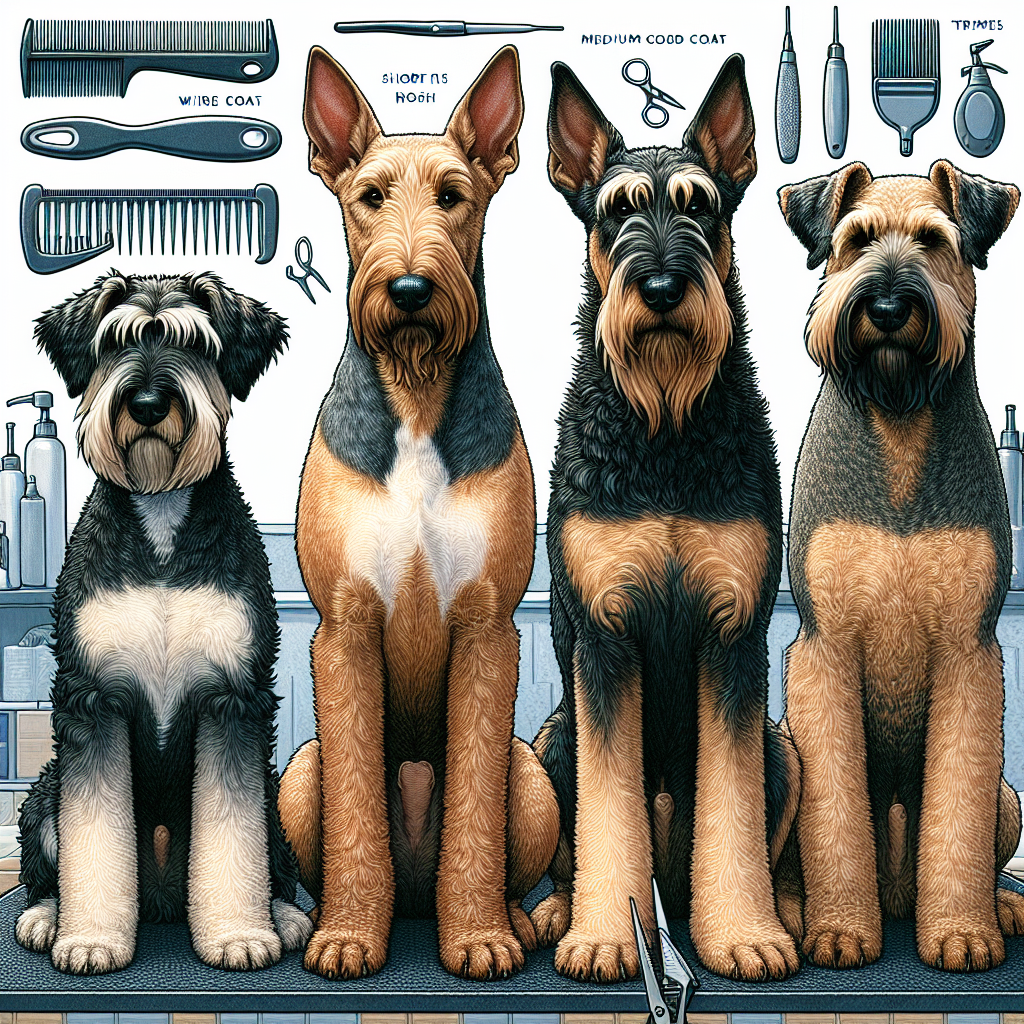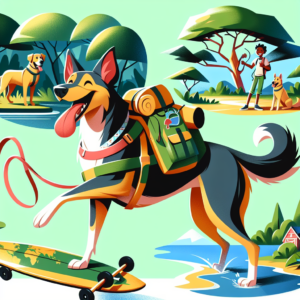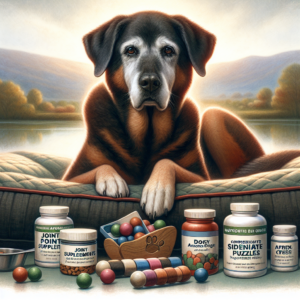Contents
Introduction
Grooming is an essential aspect of pet care, and for Africanis dogs, it plays a vital role in maintaining their health and appearance. While Africanis dogs are known for their resilience and adaptability, regular grooming helps ensure that their coat remains in optimal condition, preventing skin issues, discomfort, and matting. Additionally, grooming fosters a deeper bond between the dog and its owner, as it involves close physical interaction that strengthens trust. In this comprehensive guide, we will explore the various grooming needs of Africanis dogs, including coat types, brushing, bathing, nail trimming, and ear care.
Coat Types and Maintenance
The Africanis breed is diverse, with different coat types that can range from short to medium-length coats, which can be smooth, wiry, or even slightly curly in some cases. Understanding the specific coat type of your Africanis dog will guide you in choosing the right grooming techniques and products for maintaining its coat. Below are the primary coat types within the breed and tips for their upkeep.
1. Short-Coat Africanis
Coat Description: Short-coat Africanis dogs have sleek, close-fitting fur that lies flat against the body. The short coat is often very easy to care for but can show dirt more easily.
Grooming Tips:
- Brushing: Brush your short-coated Africanis dog at least once a week to remove loose hair and prevent any buildup of dead skin cells. Use a rubber curry brush or hounds mitt for a gentle brushing experience. This will also stimulate circulation in the skin and promote a healthy coat.
- Shedding: While short coats shed less than long coats, shedding still occurs, especially during seasonal changes. Regular brushing helps manage the shedding and keeps hair off your furniture and clothes.
- Common Issues: Watch out for dry skin or flaky patches. If your dog starts to develop dry patches, it may benefit from occasional moisturizing or a more frequent bathing schedule.
2. Medium-Length Coat Africanis
Coat Description: The medium-length coat is slightly thicker and more textured than the short coat. It may vary in length around the neck and tail area, offering a slightly bushier look.
Grooming Tips:
- Brushing: Brushing your medium-coat Africanis should be done at least two to three times per week to prevent tangling and matting. Use a slicker brush or a pin brush to gently remove tangles and loose hair. Be thorough around the neck and tail, where tangles are more likely to form.
- Trimming: You may need to trim certain areas around the feet, ears, or underbelly to maintain a tidy appearance. Use dog-safe grooming scissors for these areas.
- Common Issues: Watch for mats in areas where the coat tends to get longer or more dense, such as around the ears, belly, or back of the legs. If your dog develops mats, carefully work through them with a detangling spray and a comb.
3. Wire Coat Africanis
Coat Description: Some Africanis dogs have a wire-like coat with a rough texture. This type of coat requires more maintenance, as it tends to grow denser and may form mats and tangles more easily.
Grooming Tips:
- Brushing: Wire coats need to be brushed more frequently, typically three to four times per week. Use a pin brush or combing rake to gently remove any loose hairs and prevent matting.
- Hand-Stripping: For wire-coated Africanis dogs, hand-stripping (manually plucking the dead coat from the skin) may be necessary to maintain the breed’s natural look. This method is best done by a professional groomer but can be done at home with proper training and tools.
- Common Issues: Wire coats can develop mats and tangles if not properly maintained. Regular hand-stripping, along with brushing, will prevent matting.
Brushing and Bathing
1. The Importance of Regular Brushing
Brushing is an essential part of maintaining the health of your Africanis dog’s coat. Regular brushing not only removes dirt and debris but also helps to stimulate natural oils that keep the coat shiny and healthy. Additionally, brushing prevents matting and tangling, which can be uncomfortable for the dog.
Frequency:
For short-coated Africanis, brushing once a week is sufficient. However, medium or wire-coated Africanis dogs require more frequent brushing, typically two to three times per week, to keep their coats free of tangles and mats.
Techniques:
Always brush in the direction of hair growth to prevent damage. For dogs with medium to long coats, pay extra attention to the areas that are more prone to tangling, such as the underarms, tail base, and behind the ears.
2. Bathing Your Africanis Dog
Bathing is important to keep your Africanis dog clean and free from excess oils or dirt that may accumulate in their coat. However, over-bathing can strip natural oils from the skin, so it’s important to find the right balance.
Frequency:
Generally, an Africanis dog should be bathed every 6-8 weeks, though this can vary depending on their lifestyle and activity level. If your dog spends a lot of time outdoors or in muddy areas, you may need to bathe them more frequently.
Bathing Process:
- Prepare the Bath Area: Use lukewarm water for bathing. Make sure the tub or area you use is non-slip to ensure your dog’s safety during the bath.
- Shampoo: Choose a mild, dog-specific shampoo that suits your Africanis dog’s coat type. For dogs with sensitive skin, opt for a hypoallergenic or oatmeal-based shampoo.
- Rinse Thoroughly: After lathering and massaging the shampoo into the coat, rinse thoroughly to ensure no product is left behind.
- Drying: After the bath, towel dry your dog to remove excess moisture. You can also use a blow dryer set to low heat to dry the coat, but be sure to keep it at a safe distance to avoid overheating or discomfort.
Nail Trimming and Ear Cleaning
1. Nail Trimming
Keeping your Africanis dog’s nails trimmed is essential for their comfort and health. Overgrown nails can lead to discomfort, difficulty walking, or even injury.
Frequency:
Trim nails every 2-4 weeks, or when they start to click against the floor.
Techniques:
- Use the Right Tools: Invest in a quality pair of dog nail clippers or a grinder. Guillotine-style clippers or scissor clippers are the most common tools for home use.
- Trimming Process: Hold the paw firmly but gently, and clip just the tip of the nail to avoid hitting the quick (the sensitive area inside the nail). If you’re unsure, trim a little at a time.
- Tip: If your dog’s nails are dark and you can’t see the quick, trim small amounts to avoid cutting too deep.
2. Ear Cleaning
Africanis dogs, like all breeds, need regular ear cleaning to prevent infections. Dirty ears can lead to discomfort, irritation, and more serious health issues.
Frequency:
Clean your dog’s ears at least once a month, or more frequently if they have long ears or are prone to ear infections.
Techniques:
- Ear Cleaner: Use a dog-specific ear cleaning solution (available at pet stores) to help break down wax and debris.
- Cleaning Process: Apply the ear cleaner to a cotton ball and gently wipe the inside of the ear flap. Avoid inserting anything into the ear canal, as it can cause injury.
- Drying: Ensure the ears are completely dry after cleaning to prevent moisture buildup, which can lead to infections.
Conclusion
Regular grooming is an essential part of caring for your Africanis dog. Whether you’re dealing with a short coat, a medium-length coat, or a wiry texture, maintaining a regular grooming routine will not only help keep your dog looking their best but also ensure their overall health and comfort. From brushing and bathing to nail trimming and ear cleaning, each step plays a vital role in ensuring your Africanis dog remains healthy, happy, and free from discomfort. By staying on top of their grooming needs, you will be rewarded with a well-groomed, well-behaved companion that enjoys a high quality of life.


